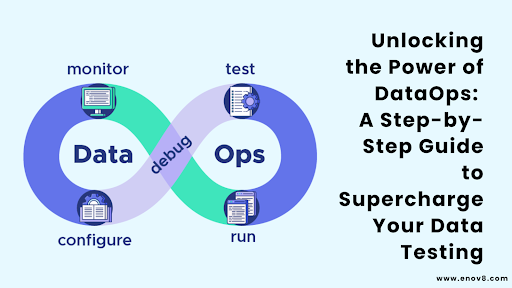Last Updated on January 24, 2024 by Asfa Rasheed
In the age of big data, organizations rely heavily on accurate and reliable data to drive their decision-making processes.
However, ensuring the quality and integrity of data can be a complex task. This is where a DataOps platform comes into play.
DataOps is an emerging set of practices that combines data integration, data quality, and data governance to streamline and automate data testing processes.
In this blog post, we’ll explore how you can create a DataOps process for data testing using data quality software.
Table of Contents
How to Build a DataOps Process for Bulletproof Testing?
Understand Your Data Landscape
Before diving into data testing, it’s crucial to have a deep understanding of your data landscape. Identify the sources of data, data pipelines, and the systems that consume the data.
This understanding will help you establish a solid foundation for your DataOps process.
Define Data Quality Metrics
Data quality metrics are essential for evaluating the accuracy, completeness, consistency, and timeliness of your data.
Collaborate with stakeholders to define relevant data quality metrics specific to your organization’s needs. These metrics can include data completeness, uniqueness, validity, consistency, and integrity.
Choose the Right Data Quality Software
Selecting the right test data management tools is critical for an effective DataOps process. Look for software that offers comprehensive data profiling, data cleansing, data enrichment, and data monitoring capabilities.
Evaluate different solutions based on their ease of use, scalability, integration capabilities, and support for your data sources.
Establish Data Testing Goals and Objectives:
Clearly define your data testing goals and objectives. Determine what you want to achieve through data testing, such as identifying data anomalies, validating data accuracy, or detecting data quality issues.
Having well-defined goals will guide your data testing efforts and help measure the effectiveness of your DataOps process.
Build a Data Testing Framework
Develop a robust data testing framework that outlines the steps, tools, and techniques involved in data testing.
This framework should include data profiling, data validation, data cleansing, and data monitoring.
Define data testing workflows, roles and responsibilities, and the frequency of testing cycles.
Automate Data Testing Processes
Automation plays a crucial role in DataOps. Leverage the capabilities of your chosen data quality software to automate data testing processes.
Schedule regular data tests, automate data profiling and validation tasks, and set up alerts and notifications for data quality issues.
Automation not only saves time but also ensures consistency and accuracy in your data testing efforts.
Collaborate and Communicate
DataOps is a collaborative endeavor. Foster collaboration between data engineers, data analysts, data scientists, and other stakeholders involved in the data testing and test environment management process.
Establish clear communication channels to share insights, raise concerns, and coordinate efforts. Regularly communicate data testing results and provide actionable recommendations to improve data quality.
Continuously Monitor Data Quality
Data quality is not a one-time effort; it requires continuous monitoring. Implement a proactive data monitoring system that alerts you to data quality issues in real time.
Monitor data pipelines, track data lineage, and leverage data quality dashboards to gain insights into the health of your data.
Continuously monitoring data quality allows you to detect and resolve issues before they impact your decision-making processes.
Iterate and Improve
DataOps is an iterative process. Continuously evaluate the effectiveness of your DataOps process and identify areas for improvement.
Collect feedback from stakeholders, measure data quality metrics, evaluate the efficiency of the test data management tools and refine your data testing framework accordingly.
Embrace a culture of continuous improvement to ensure your DataOps process evolves with the changing needs of your organization.
Frequently Asked Questions
How frequently should data testing be performed?
The frequency of data testing depends on the organization’s data environment and requirements.
Ideally, data testing should be performed on a regular basis, for example daily, weekly, or monthly, depending on the criticality and volume of data.
Real-time data monitoring should also be implemented to detect data quality issues as they occur.
Can DataOps be implemented in organizations of any size?
Absolutely! DataOps principles and practices can be implemented in organizations of all sizes.
The scalability and flexibility of data quality software allow organizations to adapt DataOps processes to their specific needs and data environments, whether they are small startups or large enterprises.
Is DataOps a one-time implementation, or is it an ongoing process?
DataOps is an ongoing process. It requires continuous monitoring, evaluation, and improvement. DataOps should be ingrained into the organizational culture, promoting a mindset of continuous improvement and adaptability to changing data needs and technologies.
Wrapping Up
Implementing a DataOps process for data testing with data quality software can significantly enhance the quality and reliability of your data.
By following the steps highlighted in this blog post, you can establish an effective DataOps platform that automates data testing, improves data quality, and empowers your organization to make data-driven decisions with confidence.
Remember, DataOps is an ongoing journey, and investing time and effort in building a robust process will yield long-term benefits for your organization’s data ecosystem.




















